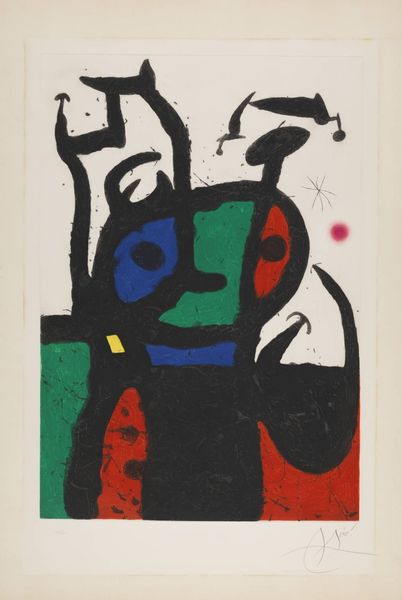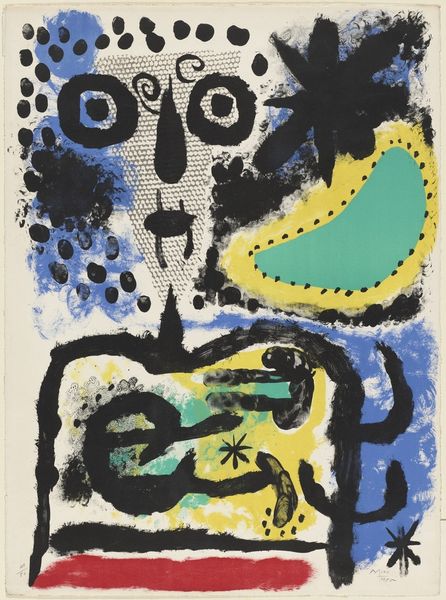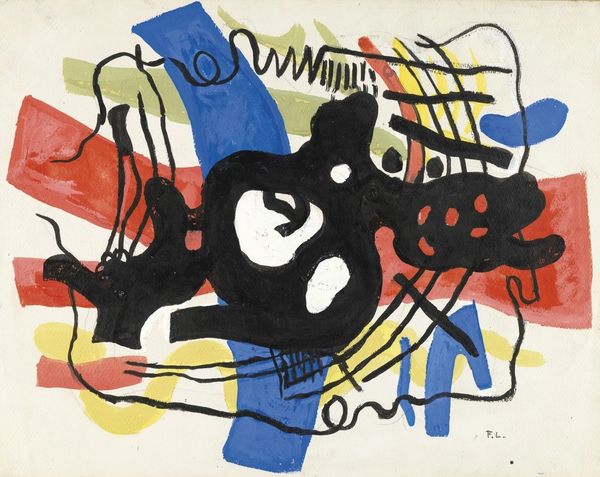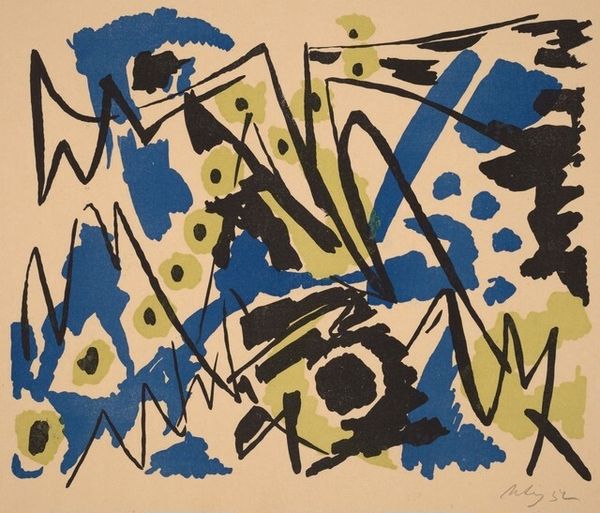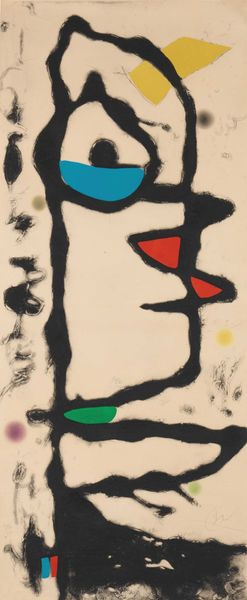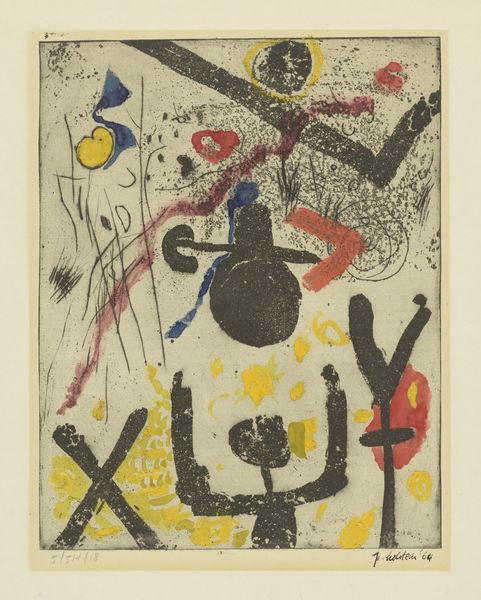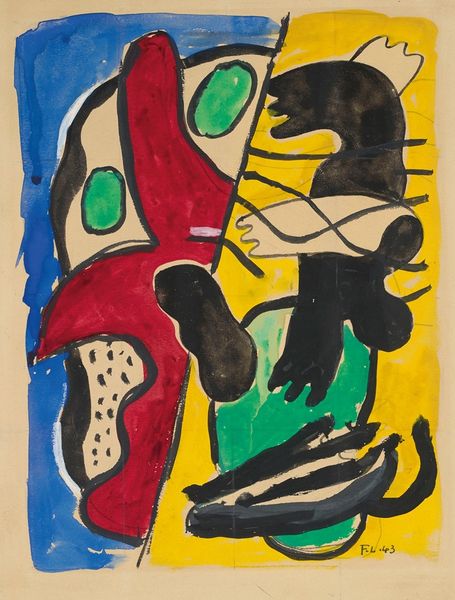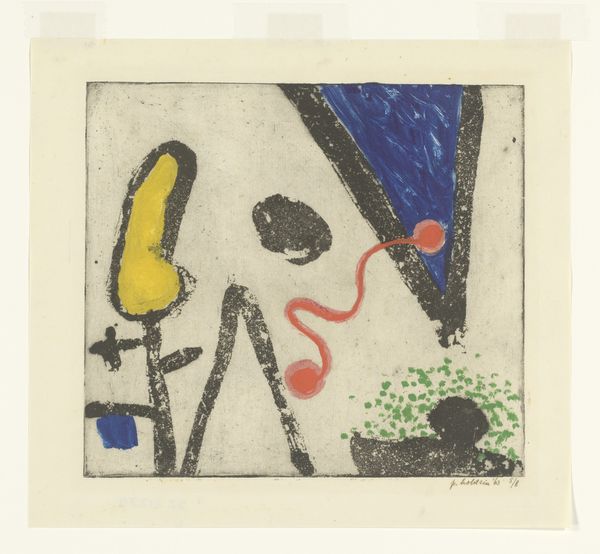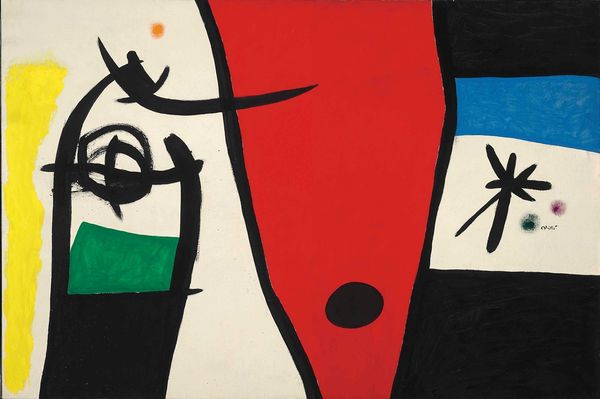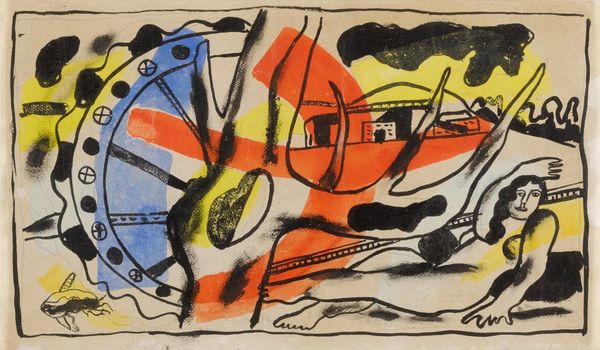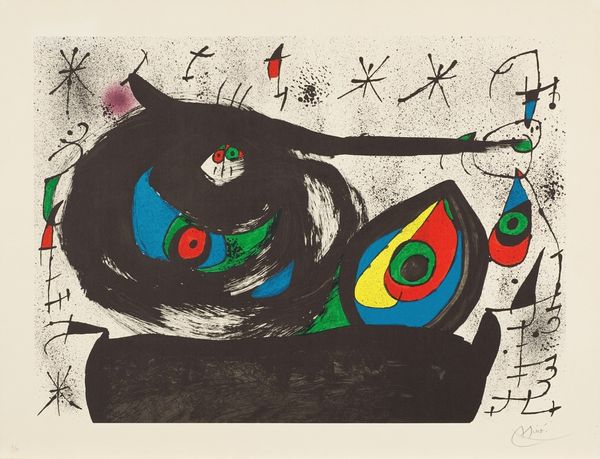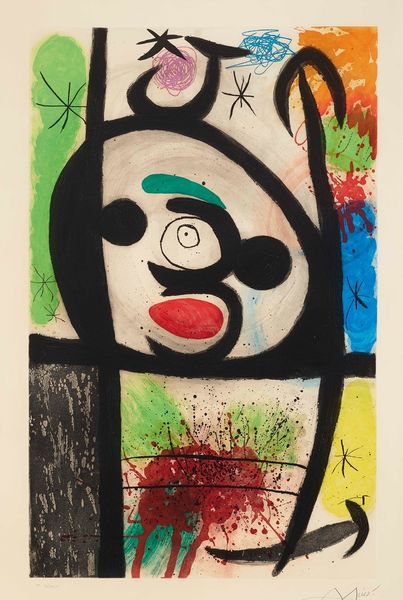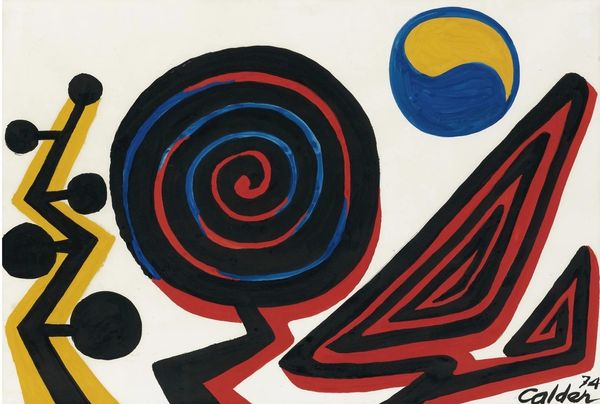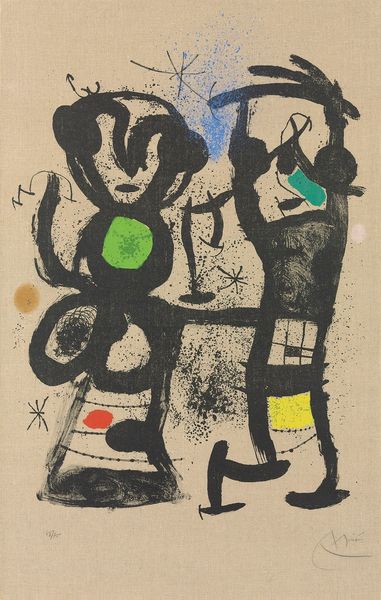
painting, acrylic-paint
#
painting
#
caricature
#
acrylic-paint
#
abstract
#
form
#
geometric
#
abstraction
#
line
#
surrealism
#
modernism
Copyright: Modern Artists: Artvee
Curator: This is "Le Bagnard et sa compagne" by Joan Miró, created using acrylic paint. It’s one of those pieces that looks utterly simple but, well, is it? Editor: My first thought? It’s like a cosmic cartoon, both playful and unsettling. The strong black lines against the bold colours, feels almost aggressive. Curator: Aggressive, yes! I can see that. Maybe not "aggressive," but the forms certainly aren't saccharine, are they? Miro’s lines often feel like a child’s drawing but loaded with hidden symbols. Given his engagement with Surrealism, one must ask: What’s lurking beneath the surface? Editor: Absolutely. Think of the period Miró was working in. Post-war Europe was grappling with societal upheaval and existential anxieties. Could these seemingly childlike forms be a way of confronting and subverting those darker realities? The bagnard, or convict, is a loaded figure, suggesting marginalisation, criminality, perhaps even political dissidence. Curator: Oh, interesting point. I think it’s impossible to uncouple Miro from Catalonia and his outspoken contempt for Franco’s dictatorship, he turned his art into a coded resistance. "Le Bagnard" and companion become more than just shapes. The title hints at companionship and solidarity, maybe among the oppressed? Editor: I like how you’re framing that. It definitely moves beyond formal analysis. Even the geometric abstraction—those vibrant red, blue and black blocks—refuses to settle. Nothing is quite resolved, reflecting a world in flux, grappling with profound contradictions. Curator: You know, I can get utterly lost in these contradictions; the dance between seeming randomness and the powerful intent. It almost feels as though I’m peering into his mind's landscape. Editor: And that’s where art finds its power, right? It's that intersection of personal vision and wider social narratives. The visual shorthand here allows us to consider difficult subjects and histories—ones that perhaps challenge the dominant stories. Curator: Absolutely. Every blot and line feels considered. Editor: Ultimately, this piece leaves us more unsettled than when we began, I think, prompting us to confront difficult questions and find our own connections between form and feeling, abstraction and reality. Curator: Which is really quite a feat for such seemingly straightforward piece! Miró still holds up as an agitator—pushing, probing and ultimately questioning everything.
Comments
No comments
Be the first to comment and join the conversation on the ultimate creative platform.
